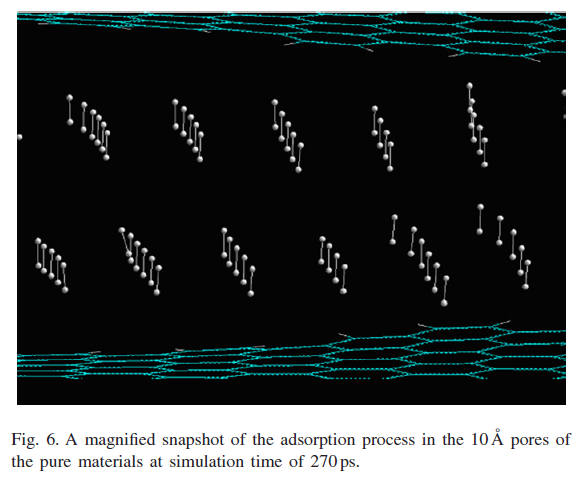Basic categories of solid adsorbents: An introduction to adsorption
Physical adsorption or physisorption is one of the most important physical processes of our times. Its understanding and application contributes greatly to modern civilization in fields of energy, pollution control, medicine and others. When the term physical adsorption or physisorption is used, a process is described that:
> Includes a solid adsorbent
> Includes at least one fluid species to be adsorbed
> Is due to electrostatic interactions between atoms [van der Waals and dispersion forces]
> Is described by weak adsorption energies [enthalpies of adsorption]
>Is greatly dependent on temperature and pressure
>Is reversible or almost reversible

Solid Adsorbents are usually highly porous materials that offer great surfaces for the adsorbed species. Today’s efficient adsorbents exhibit specific areas of 1000-5000 m2 g-1, with some reports of even higher ones. Most important adsorbents are the classic carbonaceous ones that come either from natural or petrochemical sources such as fruit pits and rubber, respectively. These adsorbents are quite cheap and abundant and have been of use for at least 40 years now. Numerous experimental and theoretical works have used such adsorbents. Another category is the Metal Organic Frameworks [MOF]. These materials are based on organic ligands and Metal atoms and are structured in ordered 3D shapes. Their advantages include the known Pore Size Distributions [PSD], high specific areas [3000-6000 m2 g-1], better enthalpies of adsorption and absence of pore blocking effects. However their manufacturing is more complicated and their cost is high.

Molecularly imprinted polymers [MIP] are a relatively new class of materials that offers known and controlled pore size distribution and average to high specific areas. Some works have reported up to 3000 m2 g-1 for these novel materials. A very important class of adsorbents is the novel carbon allotropes. In this category, some of the most exotic and novel materials are found; Graphene, Fullerene, Carbon Nanotubes and others. All of these materials possess unique electronic properties that resulted to being used for diverse applications, besides adsorption. Regarding adsorption, their decoration or atomic substitution has been suggested to lead to improved adsorption capacities, although mostly for chemisorption. A last category of solid adsorbents is the ordered mesoporous materials, which have been claimed to produce high adsorption capacities. They are mainly based on silica forms and their specific areas are low, less than 1000 m2 g-1. However, novel ordered microporous materials have been recently suggested as efficient adsorbents with high specific areas.
Solid adsorbents are the corner stone of adsorption process. This short review is merely an introduction for the articles to come and its focus is on explaining the very basic categories of adsorbents.
